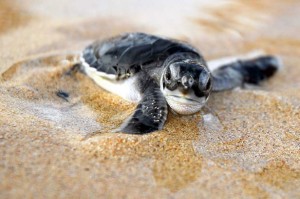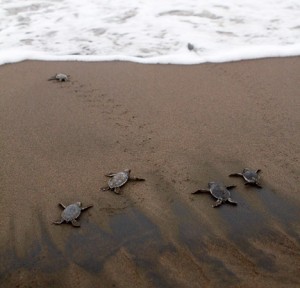-
Save the Turtles: Conservation in Costa Rica
 For centuries, Costa Rica lived up to the literal meaning of its name, “rich coast”, from its natural resources to diverse flora and fauna. Impressively sustained development as its natural charm was never jeopardised for the sake of modernity and it didn’t come as a surprise when this Latin American nation became eco-tourism’s birthplace.
For centuries, Costa Rica lived up to the literal meaning of its name, “rich coast”, from its natural resources to diverse flora and fauna. Impressively sustained development as its natural charm was never jeopardised for the sake of modernity and it didn’t come as a surprise when this Latin American nation became eco-tourism’s birthplace.Haven for the Sea Turtles
When it comes to animal conservation, Costa Rica takes the lead specifically when it comes to sea turtles. For hundreds of years, its coasts has been the natural nesting grounds for these ancient creatures while its rich underwater provides enough nutrients for survival. However, sea turtles are just one of the many animals facing threats particularly against humans.
There are seven species of sea turtles and six of them are under threat. Costa Rica attracts four species namely leatherback, green, hawkbill and olive ridley sea turtles. Leatherbacks and hawkbills are critically endangered, green sea turtles are endangered while olive ridleys are now vulnerable. Threats that they have to deal are accidental capture when they entangle with fishing nets, loss of their natural nesting and feeding grounds, pollution and hunting for both their meat and eggs.
Many groups have focused on the conservation of sea turtles including Costa Rica. Various research centres and protective marine parks will established to ensure that these sea turtles will live and populate. In Costa Rica, Cahuita National Park, Las Tortugas Research Station and the Osa Peninsula are the bearers of sea turtle conservation.
Relying on volunteers and researchers, Costa Rican tourism integrates tourism and conservation. To help protect these gently animals, the government believes that tourists and visitors can help in fulfilling their duties as stewards of nature starting with guided tours and volunteerism.
Wildlife tours and an expedition to remote coves and beaches promote the preservation and protection of sea turtles. Some tourists can sign up as volunteers working side-by-side with researchers and experience the daily efforts to save these turtles.
With tourism, employment increases. Fishermen and fisher folks are usually accused of killing sea turtles as part of their livelihood will see that they need to protect them. Conservation tourism as it is now called provides an alternative to their unethical source of income which is capturing and selling meat and eggs or the animals themselves.
With tourism especially with small stakeholders, sustainable coastal development can be achieved. Beaches which are breeding grounds are free from threats and female turtles can freely hatch on the sand. As locals and tourists are aware of conservation efforts, the eggs can fully hatch and hatchlings can go to the ocean. Be a part of this battle by travelling responsibly to one of the best destinations in the world – Costa Rica.
LINKS:
1. Save The Turtles Costa Rica Turtles
2. Volunteering Costa Rica: Sea Turtle Conservation Program A Broader View Volunteer Corp
3. Volunteer in Sea Turtle Conservation in Costa Rica U Volunteer Abroad






